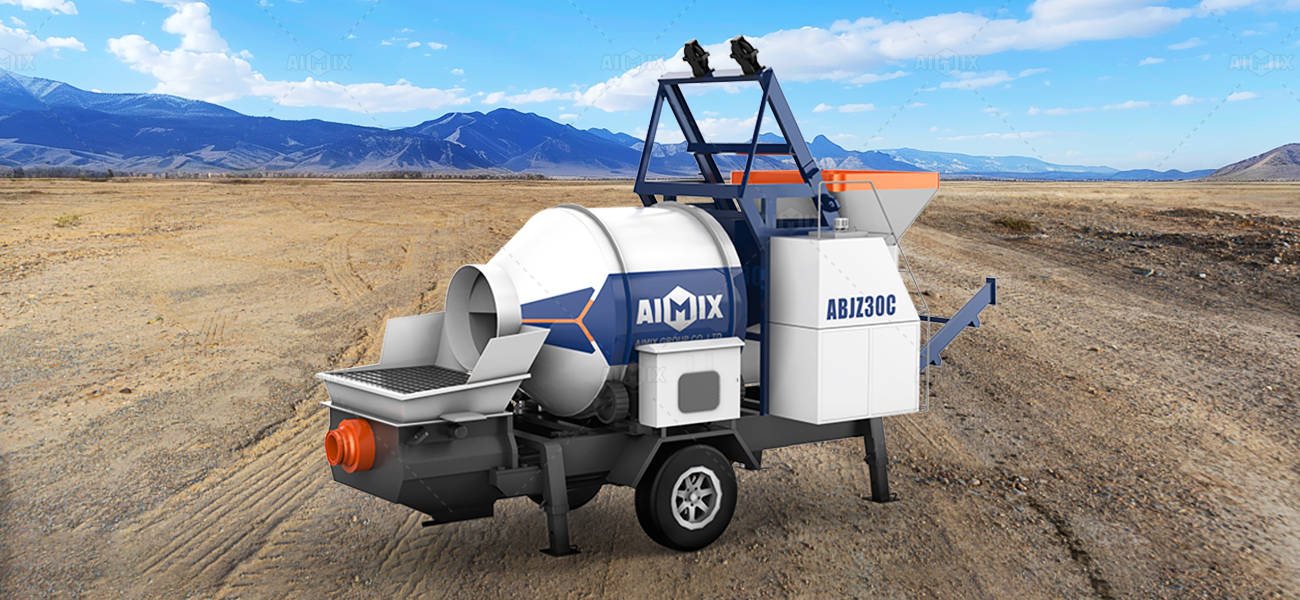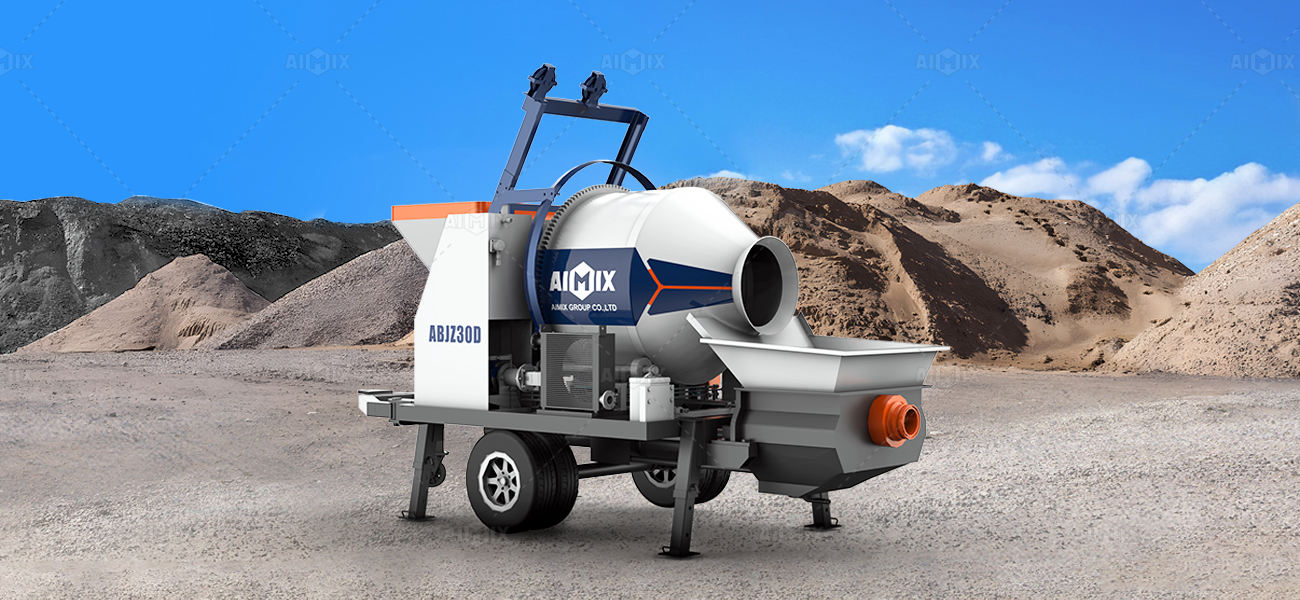When it comes to mini concrete pumps for sale, whether for stock or for active use, proper maintenance is crucial to ensure their long-term reliability, efficiency, and functionality. These pumps are essential for many small to medium-sized construction projects, but like all heavy equipment, they require attention and care to perform optimally. Proper storage and maintenance practices will extend the lifespan of the pump, reduce repair costs, and ensure that the pump is ready for use when needed.

In this guide, we will walk you through the essential steps to maintain mini concrete pumps while in stock, so you can ensure that they remain in top condition for future sales or use.
Regular Inspection and Cleaning
Regular inspection is one of the most important maintenance tasks for mini concrete pumps in stock. Even if the pump is not in use, it should be checked periodically for any signs of damage or wear. This is particularly important if the pump has been in storage for an extended period.
External Inspection:
Check the frame and chassis for any signs of rust, cracks, or deformation. Mini concrete pumps are often exposed to harsh environments, and external damage can compromise the integrity of the machine.
Inspect the hydraulic system for any visible leaks or damages. The hydraulic pump, hoses, and cylinders should be checked for cracks or signs of wear that could cause failures when the pump is put back into service.
Examine the concrete pump hopper and agitator for buildup of old, hardened concrete. If any material is left in the hopper from previous use, it can lead to clogs or damage during future operations.
Inspect the power unit (engine or motor) for any corrosion, leaks, or signs of improper operation.
Cleaning:
Clean the pump regularly to prevent the buildup of dirt, concrete slurry, and other debris. Concrete residue, in particular, can be difficult to remove if left too long, leading to blockages and operational inefficiency.
Wash the pump system thoroughly after each use and allow it to dry before storing. Pay attention to the pump’s interior parts, especially the concrete hopper and the delivery lines, which can become clogged with hardened concrete over time.
Proper Storage Conditions
Proper storage is key to maintaining the quality of mini concrete pumps for sale. Improper storage can lead to rust, component degradation, and other forms of damage. Here are some essential tips for storing mini concrete pumps in optimal conditions:
Indoor Storage:
Store the pump in a dry, covered environment. Concrete pumps should be stored in a space that is protected from moisture and direct sunlight. Exposure to the elements can lead to rust and the deterioration of rubber seals and hoses.
Keep the pump elevated off the ground using pallets or blocks. This helps prevent moisture from accumulating at the base of the pump and reduces the risk of rust or corrosion.
Outdoor Storage (if necessary):
If indoor storage is not possible, ensure that the pump is stored under a waterproof cover to protect it from rain and snow.
Place the pump on a firm surface to prevent sinking into mud or soft ground, which could cause structural damage over time.
Temperature Control:
Avoid storing the pump in extremely cold or hot environments. Freezing temperatures can cause hydraulic fluid to thicken, while excessive heat can cause seals to crack and fluid to degrade.
Maintenance of Hydraulic System
The hydraulic system is one of the most critical parts of a mini concrete pump, and regular checks and maintenance are essential to ensure it remains operational. The hydraulic system powers the pump’s piston and the delivery line that carries concrete to the desired location.
Fluid Level and Quality:
Check the hydraulic fluid level before and after use. If the fluid level is low, it can cause excessive wear on the hydraulic components, leading to pump failure.
Change the hydraulic fluid periodically, even if the pump is not in use. Over time, hydraulic fluid can degrade, reducing the efficiency of the system. Check the manufacturer’s recommendations like Aimix for fluid change intervals.
Hoses and Filters:
Inspect hydraulic hoses for cracks, leaks, or signs of wear. Replace any hoses that show signs of damage.
Check the hydraulic filter regularly and clean or replace it as needed. A clogged filter can cause the hydraulic system to overheat and degrade pump performance.

Engine or Motor Maintenance
The engine or motor is the power source for mini concrete pumps, and its maintenance is essential for ensuring smooth operation when the pump is needed.
Oil and Fuel:
Check the engine oil level regularly, and change it according to the manufacturer’s specifications. Old or low-quality oil can cause the engine to seize or underperform.
If the mini concrete pump uses a diesel engine, ensure the fuel system is clean and the fuel is fresh. Diesel fuel can degrade over time, especially if the diesel concrete pump is not used for extended periods.
Battery Maintenance:
Check the battery regularly for any signs of corrosion or damage. Clean the terminals and ensure the battery is fully charged before storing the pump. In cold weather, it’s advisable to use a battery maintainer to keep the battery in good condition.
Maintaining the Pumping Components
The pumping components of the mini concrete pump are directly responsible for moving the concrete, so maintaining them is crucial for operational efficiency.
Delivery Lines:
Inspect the delivery lines for blockages or signs of wear. Delivery hoses can become clogged with hardened concrete, so it’s important to clean them thoroughly after each use.
Ensure that all couplings and joints are tightly secured and free of leaks. Loose connections can lead to concrete leakage, which can be both messy and costly.
Pump Wear Parts:
Check the wear plates, pistons, and other key parts for signs of wear and replace them as necessary. These parts are subject to heavy wear, especially if the pump is frequently used to transport abrasive or coarse aggregates.
Lubricate moving parts to ensure smooth operation. Proper lubrication helps reduce friction, prevents rust, and increases the longevity of the pump.
Pre-Use Testing
Before putting a mini concrete pump back into service, always perform a thorough pre-use inspection and testing:
Start the engine or motor and allow it to warm up. Check for unusual noises or vibrations that could indicate a problem.
Test the hydraulic system by operating the pump with water or a test mix to ensure that it is functioning properly. Check for leaks, unusual noises, or lack of pressure during the test.
Maintaining mini concrete pumps for sale while in stock is essential for ensuring their longevity and reliability when they are needed for a project. By regularly inspecting, cleaning, and storing the pumps properly, you can reduce the risk of costly repairs and ensure that the pumps are ready for immediate use when purchased by customers. Whether the pump is a trailer type, mixer type, or boom type, taking these proactive maintenance steps will maximize its performance and value for future owners.
By investing in regular maintenance, you not only extend the lifespan of your mini concrete pumps but also protect your investment and maintain the reputation of your equipment for sale.